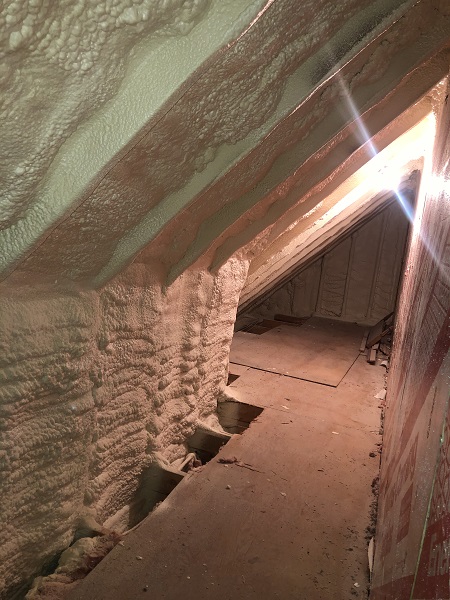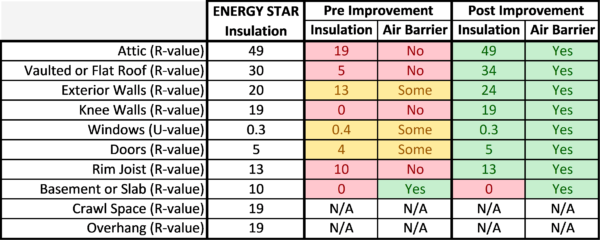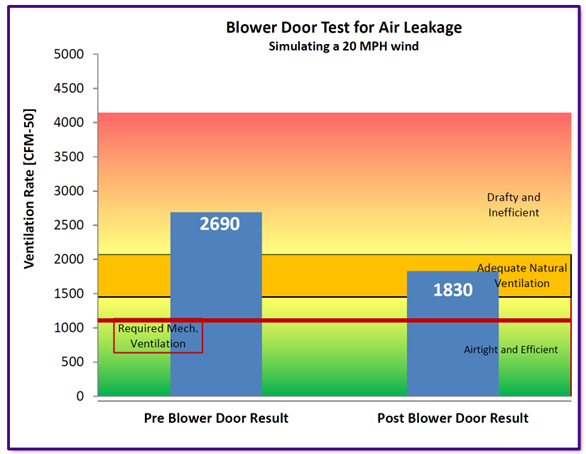The Godward Family
Overview
With environmental impacts being the foundation of Ecotelligent Homes, it was the intent of the owner to create a company that provided clients with a quality contractor that could both improve the comfort of their homes and reduce energy consumption. After purchasing what is planned to be her forever home, it was time to put the company practices into action on this home.
Key Problems
- Attic insulation did not meet ENERGY STAR insulation recommendations
- Cold floors due to a lack of rim joist insulation
- Knee walls had no insulation
- Raking a 1980’s home to net zero
- Phasing the project to support the budget and work with other planned upgrades
Approach
At Ecotelligent Homes we believe the first step in reducing a home’s carbon footprint and improving comfort should focus on the building envelope. A building envelope is defined as the separation of interior and exterior spaces. At this separation point, there should be both a thermal barrier and an air barrier. A thermal barrier can be related to a wool sweater and an air barrier as a windbreaker. When you couple these two together your home will then have the cozy winter jacket feel. Insulation gives the thermal barrier and air sealing gives the home its air barrier.
Over 2.5 years, the Ecotellignet Homes team worked to improve the energy efficiency of the South Lyon home. The project was completed in phases, making some improvements while other home projects were being completed.
 Step 1
Step 1
Insulation improvements were made in the attic spaces and basement rim joists since they were easy to access.
Insulation in the attic and the rim joists were first removed. The old insulation was then replaced with blown cellulose insulation, which is the best insulation type for an attic in Southeast Michigan. Closed cell spray foam was added to the home’s basement rim joists to improve the air and thermal barriers of the house.
Step 2
When the old roof was removed, the vaulted attic was accessed and insulation updates were made prior to the new roof being put on.
Due to a leak in the roof, it needed to be replaced. The removal of the roof allowed for easy access to improve the insulation and increase the R-value to create a more comfortable home.
Step 3
Solar panels were added to the new roof.
Once the building envelope was addressed, it was time to focus on renewable energy. The property had an existing pole barn that gave the perfect opportunity for solar. Ecotelligent Homes worked with Michigan Solar Solutions to design a solar array to work with the owner’s needs. The plan for the home was to add a heat pump, which would ultimately lead to higher electric bills in the future, so the solar array was designed in a fashion that would allow for the future addition of panels to offset any increases to the electrical load of the home.

Step 4
Mechanical improvements were made by installing a new furnace. A heat pump was also sized for the improved building envelope.
With the building’s envelope tightened up, and the solar array installed it was time to tackle the heating and cooling needs. The home was previously equipped with a 98% efficient furnace and an AC unit that had seen its better days. The AC would be replaced with a Carrier Infinity 18 SEER 5-stage heat pump, this unit needs to be paired with the Carrier Infinity furnace. Even though the existing furnace was a 98% efficient furnace the new Carrier Infinity furnace had several upgrades to offer including a variable-speed blower motor and modulating gas valve.
The homeowner will be doing ongoing research to see what temperature they can set the HVAC system to in order to change its heating from the heat pump to the backup gas furnace. Lots of research suggests 35 degrees as the point of change over in the cold climate we have here in Michigan. We will tweak the system and see if we can go even lower than 35 degrees, keeping efficiency and economic concerns at the forefront of our research.
Step 5
Insulating basement walls as the basement is completed in the near future.
Outcome
By completing steps 1 through 4, the home’s insulation ratings meet or exceed ENERGY STAR ratings. The basement R-value will also meet these standards as step 5 of the project is completed.

The home’s thermal and air barriers were also improved during the initial steps of improvements. The air infiltration rate was tested with both a pre and post-blower door. As seen in the chart below, the home pre-blower door was at 2690 CFM and the post at 1830 CFM for a total reduction in air infiltration of 32%.
